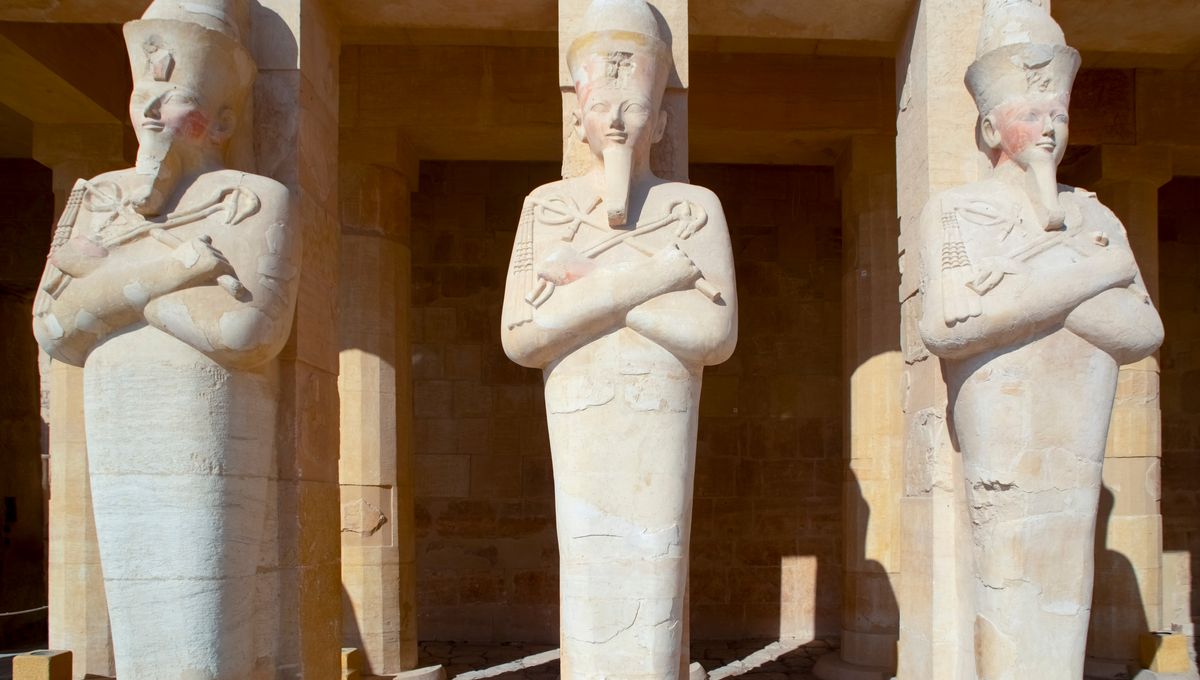
The job of ruling over ancient Egypt was largely thought of as a man’s work, yet one woman had the proverbial balls to break with tradition and reign supreme during the 15th century BCE. Her name was Hatshepsut, and while the achievements of her 21 years in power place her among Egypt’s greatest pharaohs, a brutal censorship campaign resulted in all traces of her existence being erased immediately after her death.
Obscured from history for 3,500 years, Hatshepsut was a considerably more significant figure in ancient history than the more celebrated Cleopatra. During her rule, the woman king oversaw the building of numerous dazzling monuments – including the impressive Deir el-Bahri funerary complex near the Valley of the Kings – while presiding over a period of peace and prosperity.
Yet her legitimacy to rule was based on shaky foundations. The daughter of Thutmose I and his wife Ahmose, Hatshepsut became queen after marrying her half-brother, Thutmose II. When her sibling/spouse died in 1479 BCE, the bereaved monarch was appointed regent to her stepson Thutmose III, who was too young to take the throne by himself.
Despite being expected to relinquish power when the young king came of age, Hatshepsut had other ideas and declared herself pharaoh, holding onto the throne until her death in 1458 BCE. To strengthen her claim to the pharaoh-ship, she had herself depicted as a man in countless statues and frescoes, complete with kingly clothing and a beard.
Yet it was her expert leadership that played the biggest role in bolstering her royal status. Among her greatest achievements was a wildly successful expedition that she led to the land of Punt near the Red Sea, returning with untold riches including gold, ivory, and an array of exotic animals.
However, when Thutmose III finally got his chance to rule after Hatshepsut’s death, he set about destroying all monuments built in her honor and erasing all mention of her name. Despite being a militarily successful pharaoh in his own right, it seems Hatshepsut’s successor was not happy about being made to wait so long to take his place on the throne, and was determined to incorporate his stepmother’s achievements into his own legend.
It wasn’t until 1822 that archaeologists finally rediscovered Hatshepsut’s name while deciphering hieroglyphs at Deir el-Bahri, enabling them to begin undoing the damage done by Thutmose III and piece together the story of ancient Egypt’s most powerful woman. In 1903, world-famous Egyptologist Howard Carter succeeded in locating the female pharaoh’s empty sarcophagus in the Valley of the Kings, though yet another century would pass before her mummified corpse was identified on the floor of a minor tomb nearby.
In the years since, archaeologists have found the remains of several demolished monuments bearing Hapshepsut’s name, which often appears crossed out or covered with that of a male pharaoh. In the end, though, all that Thutmose III succeeded in doing was enhancing the legacy of his remarkable stepmother, whose audacious rise to power is now considered one of the most remarkable episodes in ancient Egyptian history.
Source Link: Who Was Hatshepsut, Ancient Egypt’s Most Powerful Female Pharaoh?